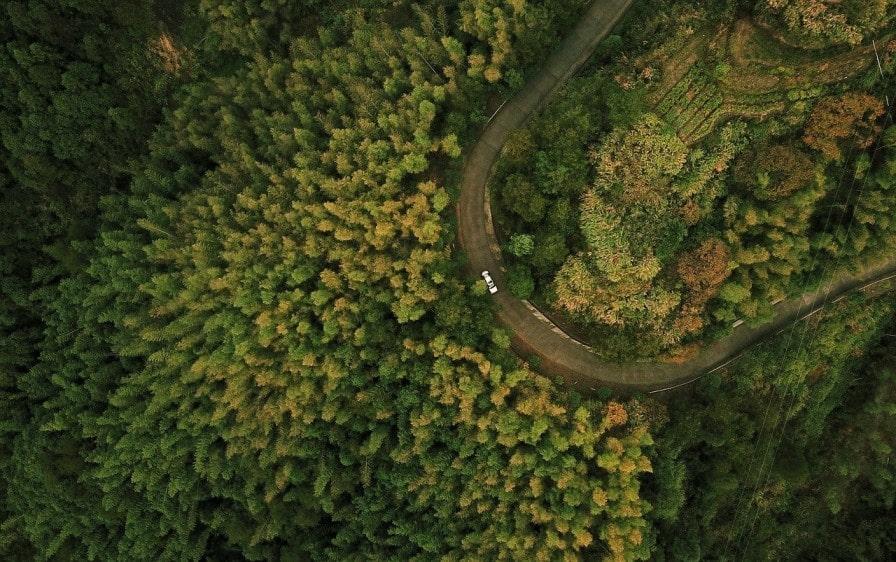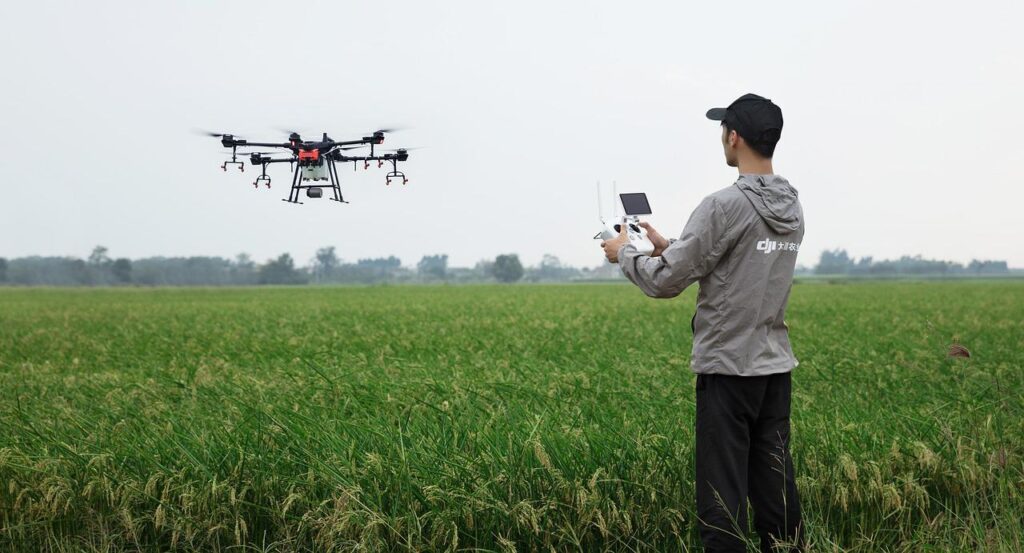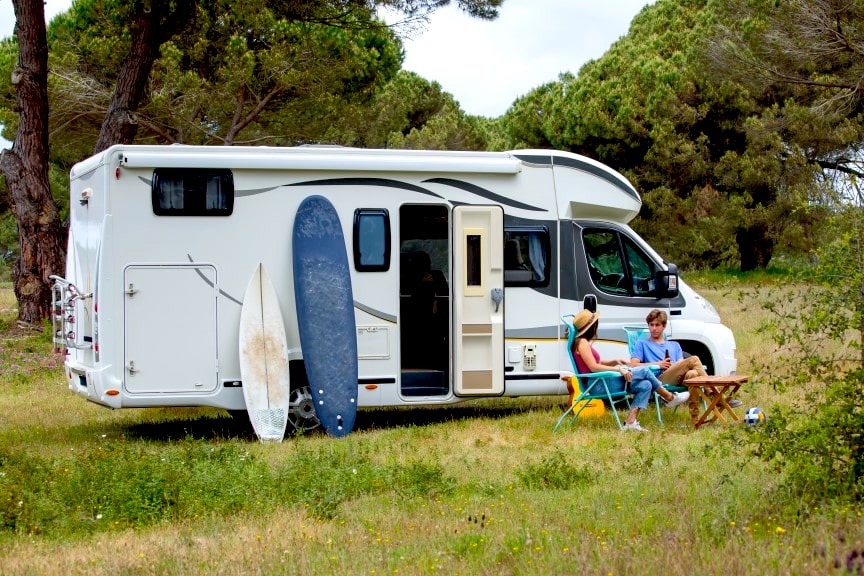The range of a drone refers to how far a drone can fly out from the operator whereas still keeping a functional signal. So, how far can a drone fly? Keep scrolling, we have a fascinating article for you and let’s get started.
Drone and Flight Controls
Most of the time, drone range is constrained by regulation rather than technological limitations. A long-range drone, however, might be helpful when you’re in an uncontrolled region or have the authorization to fly over the line of sight.
There is a stated flight range for each drone type. The drone’s precise range will vary depending on the transmission technology utilized and the intensity of the controlling signals. It should be no surprise that more costly drones would often have a greater range.
A drone’s range may be determined by two different methods
- The drone’s maximum range is from you.
- How much distance the drone could travel before its battery dies.
Many drones have a velocity and flying duration that allows them to traverse 10 miles upwards on land, yet they can only go a distance of less least 1 mile from the controller.
How Far Can A Drone Fly?

The distance that drones may travel from their operator seems to expand as drone technology advances. Today, purchasing a drone that can travel up to 10 kilometers (6.2 miles) out from the controller is not unusual. That area is fantastic.
- A hobby drone may be able to fly between 20 and 100 yards.
- Premium consumer drones can fly up to 8 kilometers (4 miles) or 2.5 miles.
- A typical range for mid-level drone technology is between 400 and 1.5 miles (0.6 to 3 kilometers).
- Modern, high-end drones range to 8 kilometers (or 5 miles).
These days’ drones can fly upwards to 18 kilometers distant from their operators. But according to the law, a drone should always be maintained in the operator’s line of view. This may dramatically shorten the flight range to just 500 meters from the controller. A drone is also not permitted to fly over 400 feet.
Range of the controller
Not all drones are created equal. They may differ. They also have a broad range of options regarding the distance they may veer from the controller while maintaining flight.
Aerial Range
The drone range is the distance an uncrewed aerial vehicle may go off course and maintain a usable signal. Each drone model includes a stated flight range. However, the legal necessity to preserve your drone’s visibility while in flight should prevail above the physical restrictions on the drone’s reach. A drone’s specific range depends on the strength of the control input and the transmission technology used.
The restriction along the line of vision
It is uncertain if you can view the drones clearly enough to determine whether they are responding to your commands effectively, even if they can maintain communication with you with a range of 4 kilometers.
You cannot immediately determine if a drone would cause damage or if it will turn left after you have let it travel right if you can’t see the drone. Therefore, a drone under external control risks individuals, objects, structures, and vehicles.
As a result, according to FAA guidelines, you must keep the drone within your line of sight to operate it safely or recreationally. The terrain, adjacent objects, and atmospheric conditions would affect how far a drone fly, and you can maintain a good view of drones.
What Happens When the Drone Leaves its Range?

There are few possibilities whenever the drone leaves the controller’s line of sight.
Autonomously, the drone would head back to its base
This is the constructed failsafe inside the ideal case and applies to most GPS drones. The drone would automatically come back home when it is within FPV sight.
The drone would come to a halt and pause while hovering
This may be an opportunity for you to approach the drone so that you may receive the controlling signal once more.
In any location, the drone would settle
It isn’t an issue if you’re in an area that’s hard to access or across the water.
Continue your flight, drone
Unless you’ve deactivated failsafe features, the lowest likely outcome for the majority of competent drones.
There will be a drone collision
This can happen if returning to the base feature is engaged and obstructions in the route. Alternatively, a flyaway might cause it to occur.
Related: How to Find a Lost Drone?
Before operating the drone, it’s indeed important to take preventative measures. It’s essential to be aware of your drone’s restrictions instead of discovering what occurs when you venture beyond its operating range.
What Decides the Range Of A Drone?

These are the factors that decide the range of a drone.
Size and Weight
If all other factors remain constant, a drone with such a lighter density would always fly further compared to one that must lift more weight. It’s just fundamental physics. The blades must work harder to create power to raise and transport more load while spinning faster.
Battery Type and Capacity
This is a no-brainer. Installing a larger battery is necessary if you desire a greater range. Users also add to the rover’s total weight by using a bigger battery, reducing its range. Your batteries must have a larger specific gravity power density if you wish to enhance the drone’s distance while adding weight.
System of communication
If the communications network could only operate nearby, then have such an issue, regardless of how large your batteries are. Most drones may be operated with a unique controller or a mobile application.
Flight Conditions
Additionally, the location where you’re traveling affects your range. Physical impediments significantly impact the frequency of radio transmission. You could have trouble flying outside your line of sight.
Climate and wind
Finally, by altering how the charge is discharged, the weather and temperatures during the day of your specific trip can also vary the distance you can go. The batteries will be drained before they reach their total capacity when you are going against the breeze since you exert a lot of force on the motors, so overcome the wind resistance. Low temperatures can substantially limit the pace at which batteries drain.
Related: Can You Fly a Drone In the Rain?
How to Extend the Flying Distance of a Drone?

There are several methods you may do if you genuinely have to extend the range of drones you currently own, whether it is capable of flying further away or navigating various sorts of disturbances in your region.
Recommendations for software
Ensure that now the FCC restrictions—rather than the CE constraints in Europe—are set within the drone’s software if you want to get the most range possible.
Hardware Recommendations
An aerial extension or a more powerful antenna can be used to improve the antenna on the device. Additionally, update the drone’s transceiver.
An extension should be bought
Although expensive, it may significantly extend your operational range.
There is more to come regarding this topic. Be with us!!
Best Long-Range Drones Market
You May Also Like:
* Trailoka content is free. When you purchase through referral links on our site, we earn a commission at no extra cost to you.








